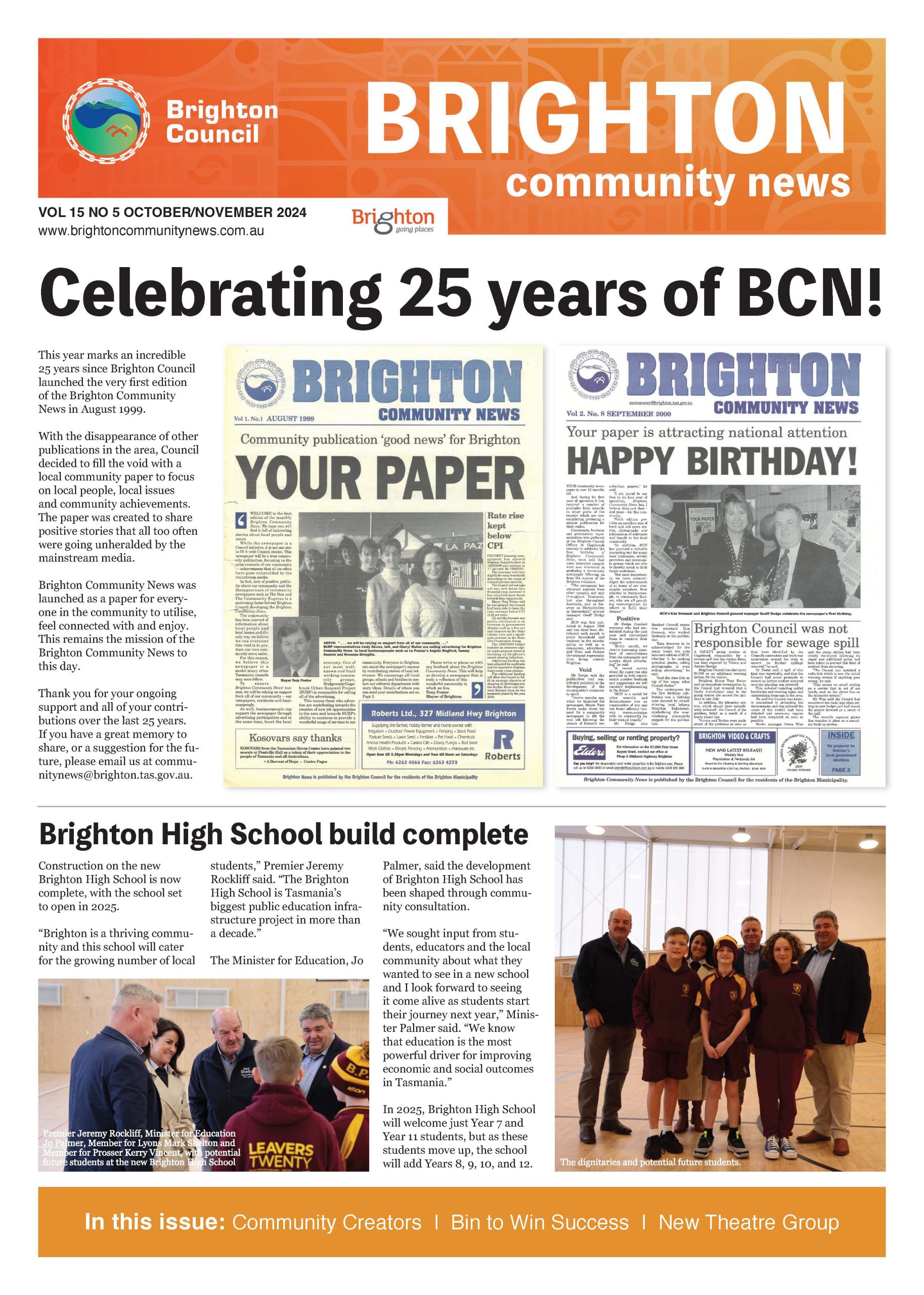Brighton: A Regional Hub
by Brighton Council

It’s been interesting over the past months looking closely at our own data, social and economic trends across our region, as well as the information released by the Future of Local Government Review (FoLGR) Board, which is currently reviewing local government on behalf of the State Government.
Some interesting statistics we’ve seen include:
- Brighton now has over 20,000 residents (we’re growing by 500 people per year and will overtake Burnie next year!)
- The Gross Regional Product for the Brighton Municipality increased by 24% in the past four years
- The number of jobs within Brighton has doubled in the past 15 years and will double again in the next 10-15 years (comfortably the highest jobs growth in Tasmania)
- There is $1billion worth of private and public development currently under construction within Brighton
- The Brighton police station, ambulance station, trade training centre, new high school and school farm all formally serve catchments that extend into or right throughout our South Central Sub-region
- Unlike many parts of the country, GP services have been secured and are now expanding within Brighton.
Brighton has for many years been proactive in collecting and considering objective information to ensure we make evidence-based decisions and that we are taking actions to prepare our communities for the future and stand the test of time. It’s heartening to see much of the FoLGR Board’s analysis aligns with our own.
One such key area is in the Board’s work on ‘community catchments’. Their report identifies Brighton’s strong community of interest with our sub-region to the north. We know this area as the South Central Sub-region (SCS), which comprises of Brighton, Central Highlands, Derwent Valley and Southern Midlands, who we have been working closely for many years. In the past few years we have established the highly successful Employment Hub, undertaken regional infrastructure studies and prepared Destination Action Plans for the growing tourism activity in the region.
The data behind this catchment involves social, environmental and economic data and reinforces strongly the increasing role that Brighton is playing as a regional hub to help serve the broader region to the north. This role as a regional hub is becoming a more prominent characteristic than the role Brighton also plays as a residential growth area of Greater Hobart.
It’s wonderful witnessing the diversity of investment, both public and private, across our municipality – when once it was only houses. There seems to be significant construction occurring everywhere right now. Importantly, much of it is commercial, industrial or educational: all things that will provide meaningful longterm employment for our communities.
It’s great seeing our region to the north thriving too, with significant developments in Bagdad, Kempton and an exciting boom in Oatlands. It’s such an exciting time for our sub-region. We look forward to continuing to work closely with our sub-regional councils, as strong and equal partners, to strengthen our rural, regional and outer-urban communities.
Brighton Mayor Leigh Gray

